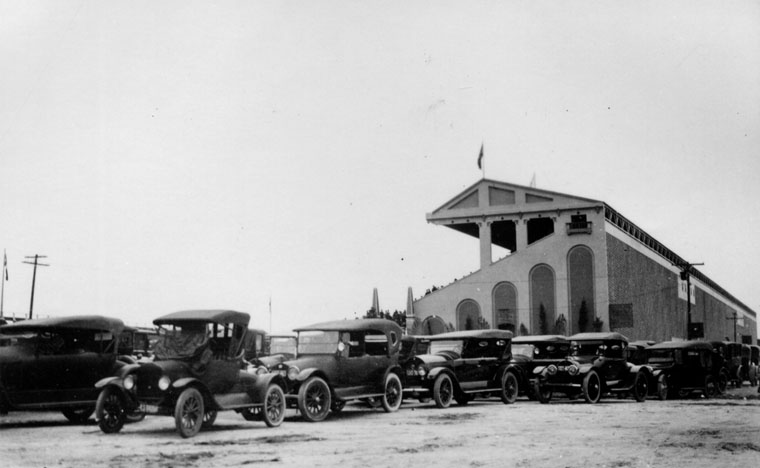The board track era started Los Angeles in 1910; a location I know as Playa del Rey. A velodrome designer was commissioned to create the first autrodrome; a steeply banked ovals track whose racing surface was created with millions of 2X4s laid on end. 100 mile per hour laps were predicted at a time when Indy was still in the 80s. The track was short lived; catching fire in 1913, but the groundwork for the next big think in motor racing had been created. John Prince, the initial designer of the track, would create the Prince Speedway Company and go on to build some 15 more tracks of various configurations. ISCSMI anyone?!?
Many tracks entwined in ancient history were board tracks for their whole life, or at some point in the locations history. Uniontown, Brooklyn, Altoona and many more were all known for their breathtaking races. New Jersey, a short 1/8 mile oval with 45 degree banking and eight second laps, was one of the most fearsome examples. During the non championship year of 1915, the first championship level board track race was held at Tacoma Speedway. A five turn track with every other board removed and gravel place into the voids to save some cash. Track historian Wayne Herstad said There was a saying that all board tracks were awful, and then there was Tacoma.
 Arguably the most famous example was the Beverly Hills Speedway. The 1.25 mile rectangle has 35 degree banking in the corners; tame considering Culver City claimed 60 degrees at their track. During the season ending race in 1920, that years 500 winner Gaston Chevrolet was killed along with two others. Gaston would posthumously win the 1920 championship but would not be the only 500 winner to perish at a board track the same year as their victory. Howdy Wilcox in 1923, and Ray Keech in 1929, both at Altoona Speedway.
Arguably the most famous example was the Beverly Hills Speedway. The 1.25 mile rectangle has 35 degree banking in the corners; tame considering Culver City claimed 60 degrees at their track. During the season ending race in 1920, that years 500 winner Gaston Chevrolet was killed along with two others. Gaston would posthumously win the 1920 championship but would not be the only 500 winner to perish at a board track the same year as their victory. Howdy Wilcox in 1923, and Ray Keech in 1929, both at Altoona Speedway.























